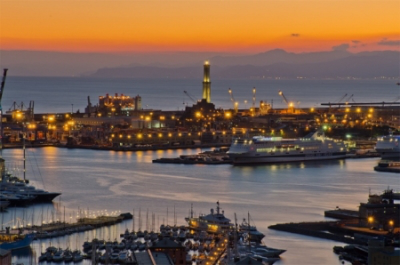Speaker
Dr
Luca D'Angelo
(University of Milano-Bicocca, Department of Earth and Environmental Sciences)
Description
The aerosol hydration level affects the aerosol optical properties [1] and its corrosion capability on metallic surfaces [2]. In this respect, corrosion prevention in Data Center basing on aerosol properties could produce energy-saving benefits.
In this work, PM2.5 samples collected in the Po Valley were subject to an innovative analysis method to characterize mutual deliquescence and crystallization RH (MDRH and MCRH). PM2.5 conductivity was measured while varying RH in a new Aerosol Exposure Chamber (AEC). Constant temperature was kept in AEC and RH steps were of 1%. PM2.5 samples were also chemically analysed by ionic chromatography (IC).
Seasonal variability of MDRH and MCRH was identified. In particular, MDRH in wintertime was 60.1±1.1% while in summer was 71.8±0.9%. MCRH was recognized at 46.9±1.1% in winter and at 64.9±1.1% in summer. Thus, hysteresis amplitudes between the two seasons were significantly different and they were quantified to be 13.2±1.1% in winter and 7.3±0.7% in summer. IC analysis showed that in Milan sulphate compounds dominate the PM2.5 ionic fraction in summer (17.8±1.5%) while nitrates compounds dominate in winter (21.5±3.6%). These data allow us to understand the seasonal behaviour of MDRH and MCRH as (NH4)2SO4 and NH4NO3 are responsible of increasing and decreasing of critical RH, respectively.
Considering the RH values in Milan during 2006-2013, the measured MDRH and MCRH allowed to estimate that the aerosol is hydrated for 33% of time in winter and summer seasons. Moreover, an innovative application of these data for Data Center cooling application will be discussed: briefly the knowledge of MDRH and MCRH allowed to save in one year 81% of energy with a CO2 emission-saving of 80 kt in the newly constructed Eni Green Data Center (http://www.eni.com/green-data-center/it_IT/pages/home.shtml) [2].
[1]Martin ST(2000), Chem Rev 100:3403–3454
[2]Ferrero L et al.(2013), Environ Sci Technol. 47:3856-64
| Working group IAS (WG1, WG2, WG3) o sessione speciale (SPR) | WG3 |
|---|---|
| Tipo di presentazione (orale o poster) | orale |
Primary author
Dr
Luca D'Angelo
(University of Milano-Bicocca, Department of Earth and Environmental Sciences)
Co-authors
Prof.
Ezio Bolzacchini
(Università di Milano-Bicocca)
Dr
Giorgia Sangiorgi
(Università di Milano-Bicocca)
Dr
Grazia Rovelli
(Università di Milano-Bicocca)
Dr
Luca Ferrero
(University of Milano-Bicocca)
Dr
Marco Casati
(Università degli Studi Milano Bicocca)
Dr
Marco Moscatelli
(Università di Milano-Bicocca)
Dr
Maria Grazia Perrone
(Università di Milano-Bicocca)

